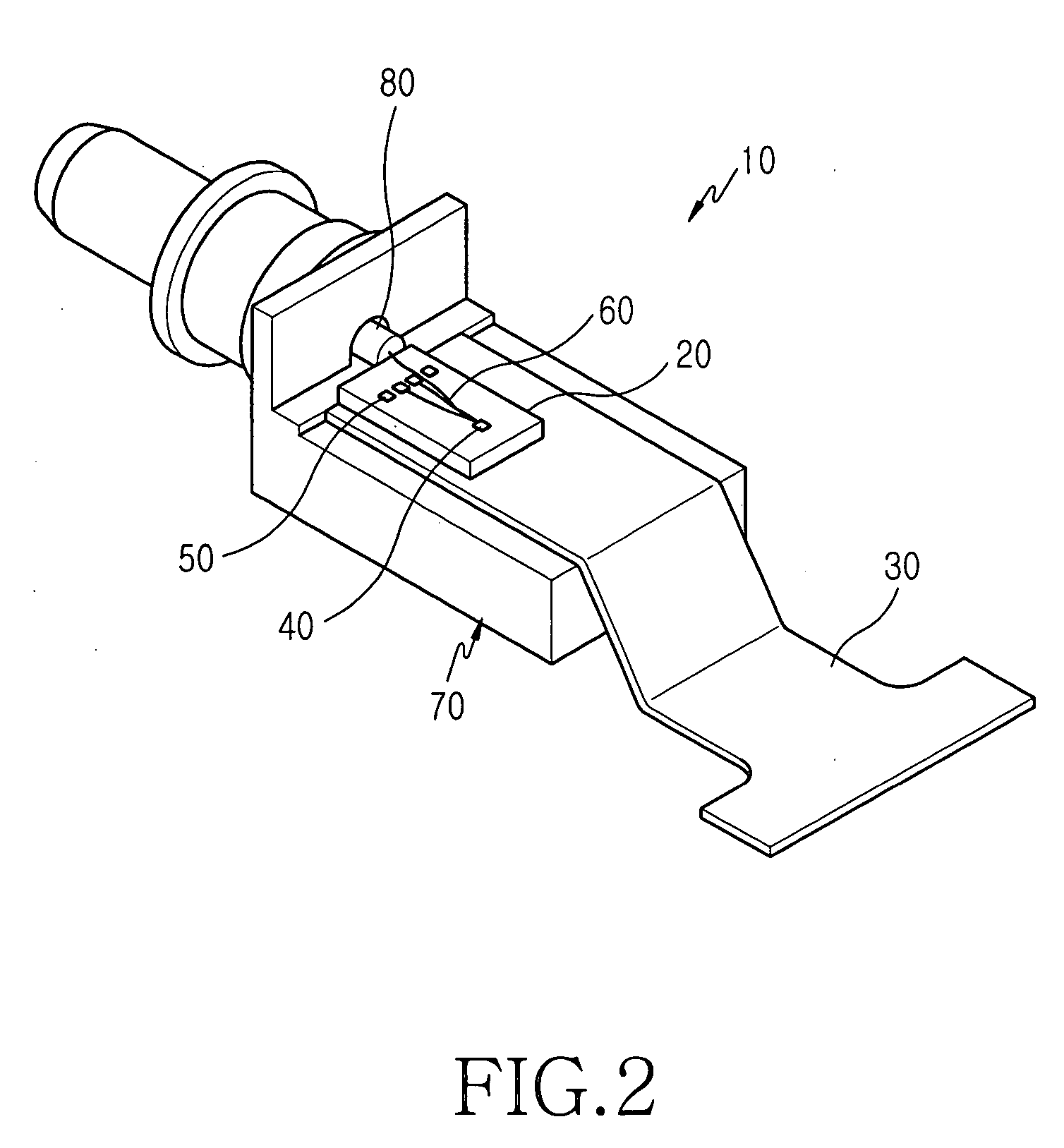Bidirectional optical transceiver
a bidirectional optical transceiver and optical transceiver technology, applied in the field of optical communication, can solve the problems of reduced manufacturing yield, bulky bidirectional optical transceivers, and difficult fabrication of bidirectional optical transceivers, and achieve the effect of simple manufacturing process and compact siz
- Summary
- Abstract
- Description
- Claims
- Application Information
AI Technical Summary
Benefits of technology
Problems solved by technology
Method used
Image
Examples
Embodiment Construction
[0027] Hereinafter, embodiment of the present invention will be described with reference to the accompanying drawings. For the purposes of clarity and simplicity, a detailed description of known functions and configurations incorporated herein will be omitted as it may make the subject matter of the present invention unclear.
[0028]FIGS. 3-7 illustrate a bidirectional optical transceiver 100 in accordance with the principles of the invention. FIG. 3 illustrates an overview of one embodiment of bidirectional optical transceiver 100, whereas FIGS. 4-7 illustrate more detailed aspects of bidirectional optical transceiver 100.
[0029] Referring to FIG. 3, bidirectional optical transceiver 100 comprises an optical fiber 200, substrate 300, wavelength distributor filter 400, PD 500, TO-Can 600, and single housing 700. The optical fiber 200 operates to input / output optical signals 800, 900 (see FIG. 7) to / from bidirectional optical transceiver 100. Fiber 200 further includes a slant surface...
PUM
 Login to View More
Login to View More Abstract
Description
Claims
Application Information
 Login to View More
Login to View More - R&D
- Intellectual Property
- Life Sciences
- Materials
- Tech Scout
- Unparalleled Data Quality
- Higher Quality Content
- 60% Fewer Hallucinations
Browse by: Latest US Patents, China's latest patents, Technical Efficacy Thesaurus, Application Domain, Technology Topic, Popular Technical Reports.
© 2025 PatSnap. All rights reserved.Legal|Privacy policy|Modern Slavery Act Transparency Statement|Sitemap|About US| Contact US: help@patsnap.com



